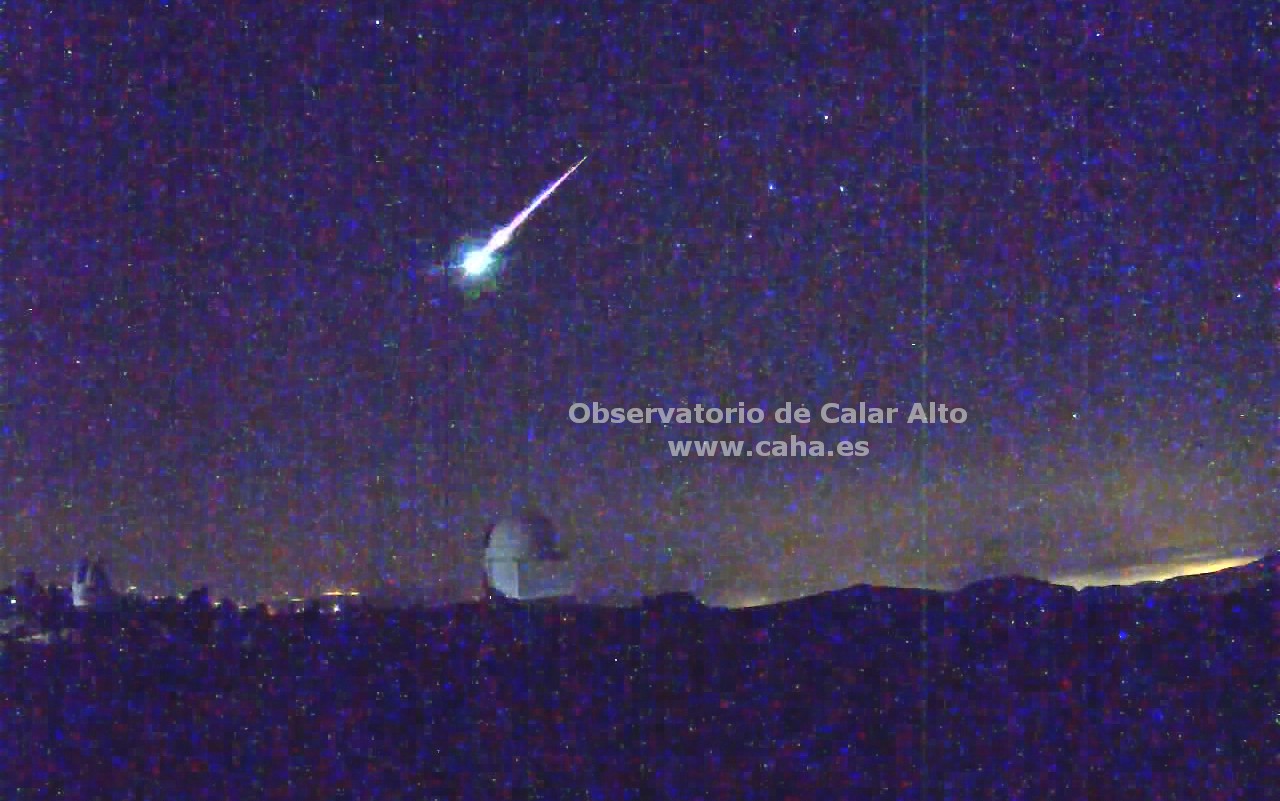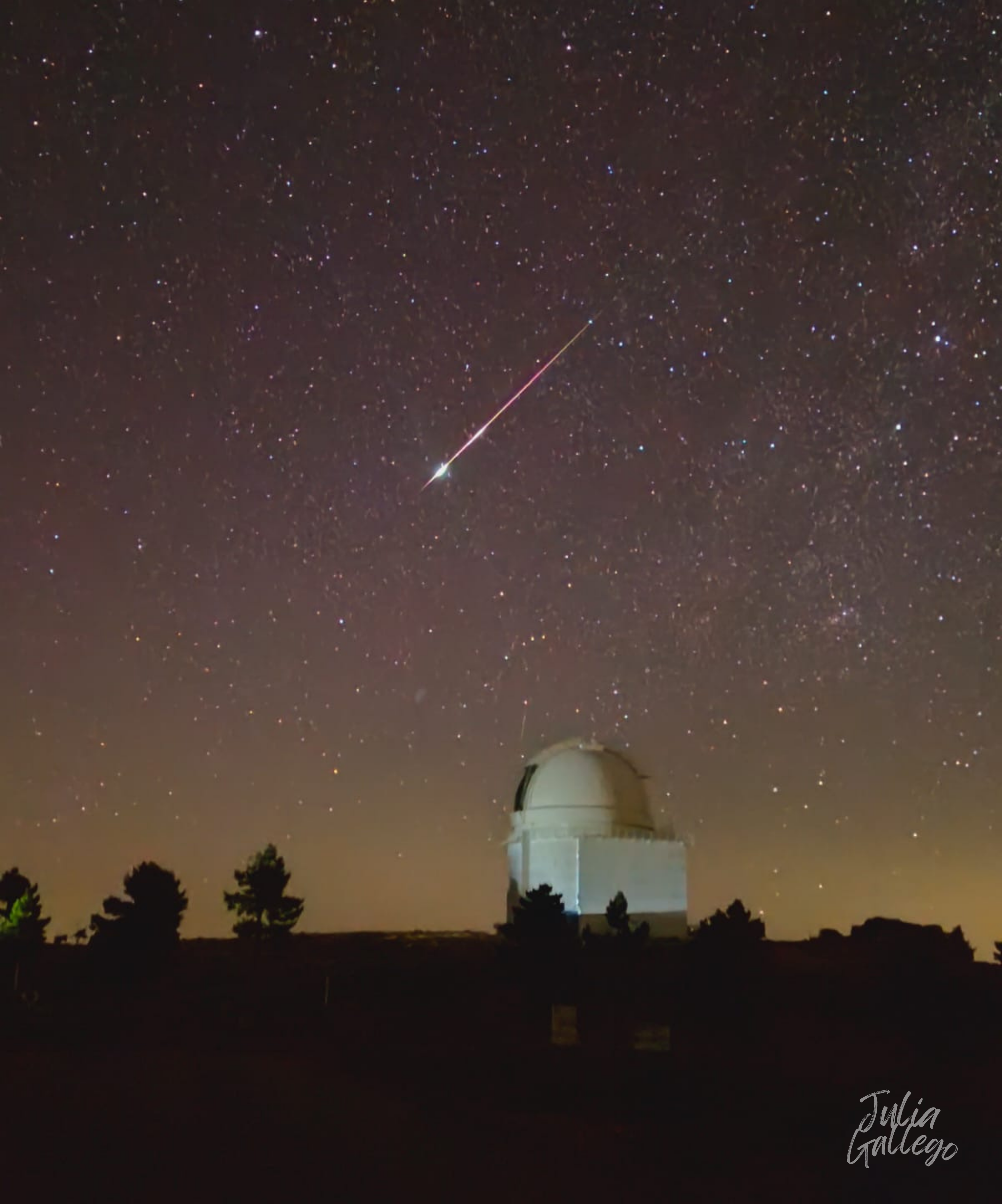
At 21:38 UTC on July 28, 2025, a brilliant Alpha Capricornid was seen crossing Albacete, heading toward Madrid and leaving behind a beautiful trail of light.
This object was recorded by the detectors of the SMART Project operated at Calar Alto (Almería), La Sagra (Granada), Sierra Nevada, El Arenosillo (Huelva), La Hita (Toledo), and Seville.
The external cameras of the Calar Alto Observatory were also able to witness this lovely event.
The preliminary analysis of this event was carried out by Professor José María Madiedo (Institute of Astrophysics of Andalusia IAA-CSIC). His conclusions are as follows:
- Event type: cometary.
- Initial speed: 88,000 km/h.
- Initial altitude: 101 km.
- Final altitude: 75 km.
What are the Alpha Capricornids?
 Alpha Capricornids are a meteor shower of cometary origin—associated with comet 169P/NEAT—that reaches its peak activity each year in late July. Although its maximum rate is modest (5–10 meteors per hour), it is notable for producing relatively slow fireballs with long trails. The best time to observe them is just before dawn, looking toward the constellation Capricornus, although some meteoroids may appear anywhere in the sky. A curious fact: in years of higher activity, such as in 2014, more than 50 meteors per hour were recorded during brief outbursts.
Alpha Capricornids are a meteor shower of cometary origin—associated with comet 169P/NEAT—that reaches its peak activity each year in late July. Although its maximum rate is modest (5–10 meteors per hour), it is notable for producing relatively slow fireballs with long trails. The best time to observe them is just before dawn, looking toward the constellation Capricornus, although some meteoroids may appear anywhere in the sky. A curious fact: in years of higher activity, such as in 2014, more than 50 meteors per hour were recorded during brief outbursts.
In the image on the right, taken by our colleague Julia Gallego, we can see the dome of the observatory’s 2.2 m telescope, whose visibility is compromised by the powerful lights of a vehicle on the ground that hinder astronomical observations (unfortunately, something all too common). Just above it, the fireball crosses the sky leaving a bright trail that underscores the contrast between the astronomical facility and the fleeting passage of the meteoric phenomenon. This moment reflects both the majesty of the night sky and the challenge of safeguarding observation quality against sources of light pollution.
The image invites reflection on the importance of preserving dark environments for the study of the cosmos and the contribution of projects like Calar Alto’s to meteoric event research.
Next, we invite you to discover the videos captured by the external cameras of the Calar Alto Observatory:
Calar Alto (CAHA) fireball detection station, together with the one at the Observatory of Sierra Nevada (IAA-CSIC) and others placed at different locations in Spain, are part of the S.M.A.R.T. project led by Professor José María Madiedo (IAA) to track that kind of objects. Specifically, Calar Alto (CAHA) station and the one at Sierra Nevada (IAA-CSIC) constitute a collaboration agreement between the IAA researcher José María Madiedo and both institutions.
 English (UK)
English (UK)
